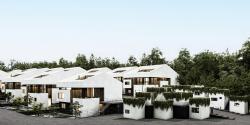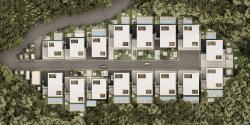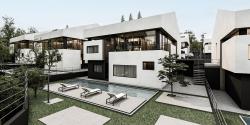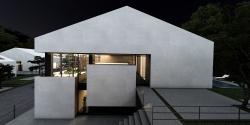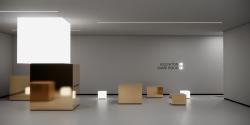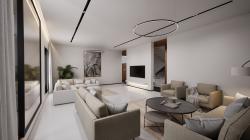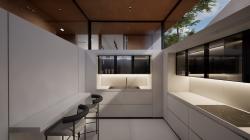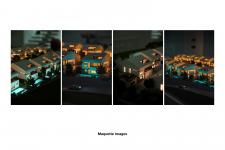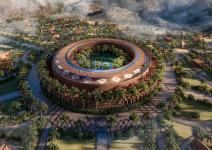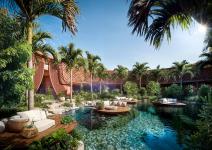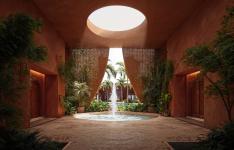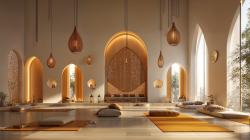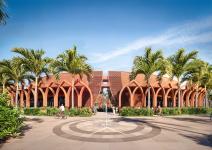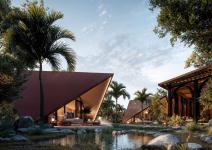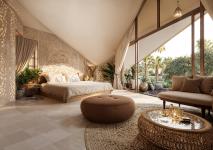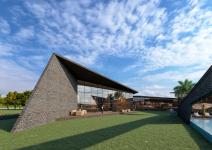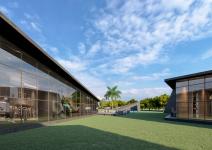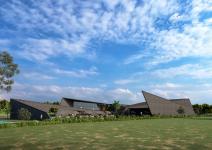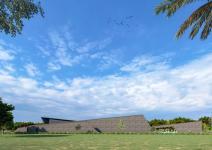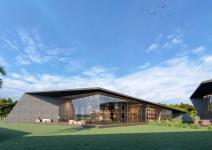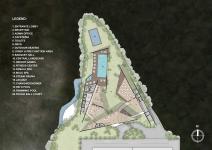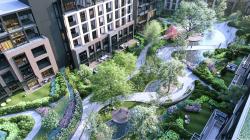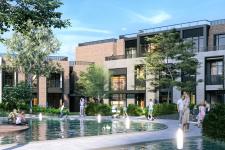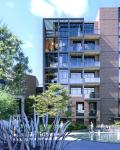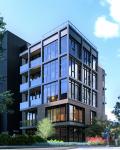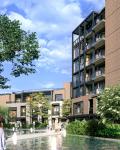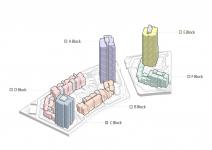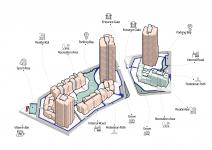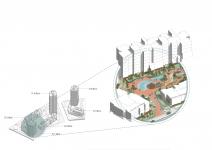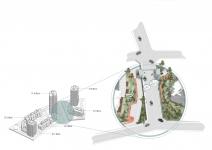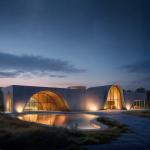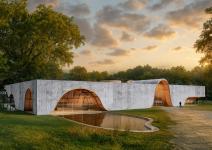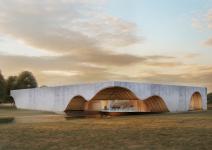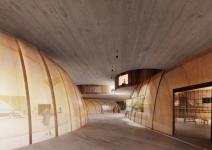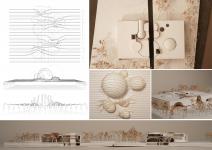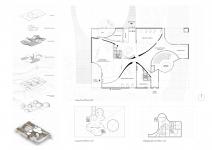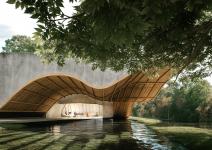World Architecture Awards 10+5+X Submissions
World Architecture Awards Submissions / 52nd Cycle
Vote button will be active when the World Architecture Community officially announces the Voting period on the website and emails. Please use this and the following pages to Vote if you are a signed-in registered member of the World Architecture Community and feel free to Vote for as many projects as you wish.
How to participate
WA Awards Submissions
WA Awards Winners
Architectural Projects Interior Design Projects
Architectural Projects Interior Design Projects
Alba Villas Complex
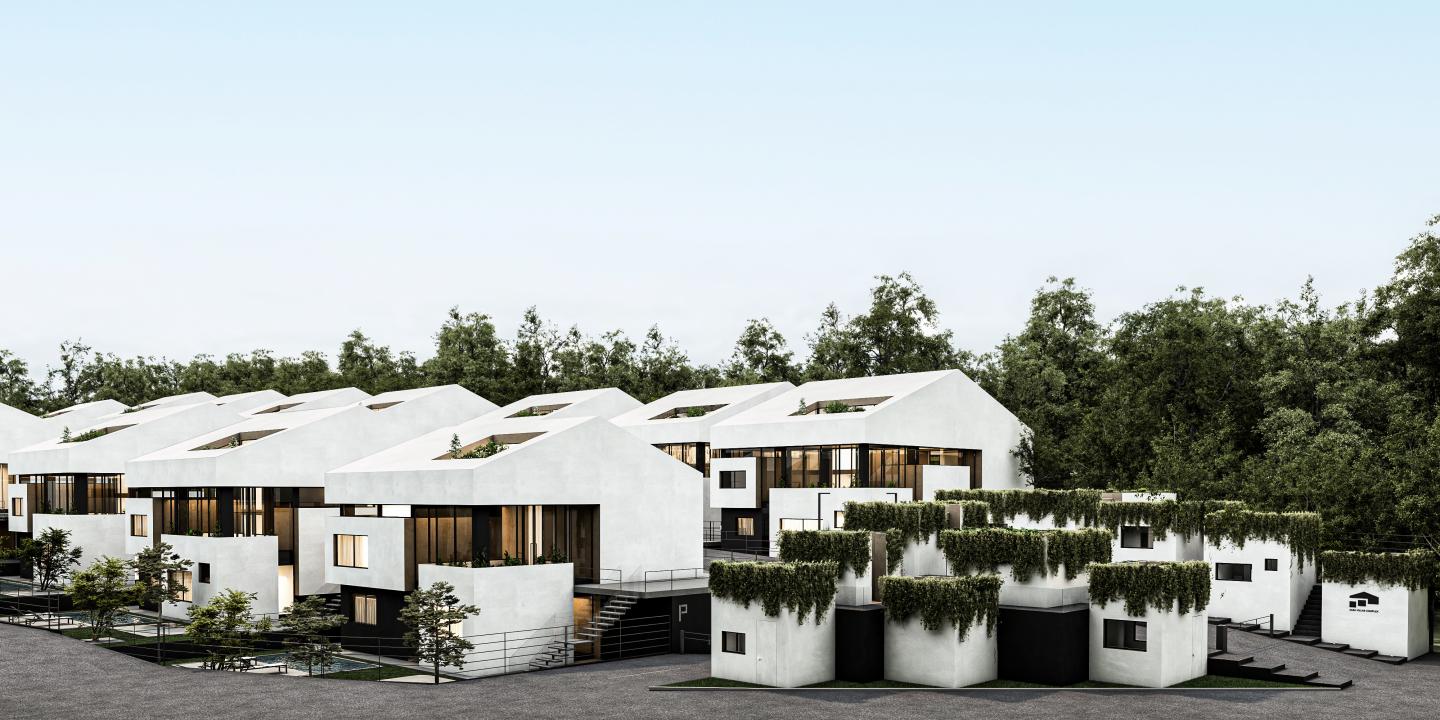

Alba Villas Complex is located in the Zekeriyakoy district of Istanbul in Turkey. The project consists of 16 villas in 7 different types with areas ranging from 600 to 900 square meters, located adjacent to a large green space. The project, which was formed by converting a conventional house into its interior spaces, represents the internal programs of the independent spaces of a house on its exterior and tries to expand the logic of the project's separation to form other programs such as the landscape, public spaces and the main entrance of the complex. The logic of the design of the villas begins with the division of the villas into 9 parts and continues by separating the spaces and creating transparency in the volume and finally conforms to the internal plan. Furthermore, according to the rules of the gable roof in the region, terraces for the bedrooms are designed on the roof to benefit from the space and the wonderful view and landscape around the site. In the design of this project, an attempt has been made to create integrity, harmony and continuity in the structure of the project by benefiting from the common gene in the design of the elements. The amenities of this complex include interior and exterior parking, gym, game room, billiard room, flexy pools, robot dog and a complete intelligent system. Material selection, energy efficiency, and nature-integrated design were fundamental elements in our design process to move closer towards sustainability. Alba Villas is an artistic experience of life.
Location: Zekeriyakoy, Istanbul, Turkey
Site Area: 12000 m²
Villa’s Gross Built Area: 600 – 900 m²
Number of Villas: 16
Status: Under Construction
Firm: OJAN Design Studio, Deniz Otesi Insaat
Lead Architect: Ojan Salimi
Design Team: Mahsa Naghavi, Reza Esfandiari, Sanaz Bazrafshan, Atena Cheraghali
Visualization: Mustafa Simsek
Model Photography: Umut Yildiz
Location: Zekeriyakoy, Istanbul, Turkey
Site Area: 12000 m²
Villa’s Gross Built Area: 600 – 900 m²
Number of Villas: 16
Status: Under Construction
Firm: OJAN Design Studio, Deniz Otesi Insaat
Lead Architect: Ojan Salimi
Design Team: Mahsa Naghavi, Reza Esfandiari, Sanaz Bazrafshan, Atena Cheraghali
Visualization: Mustafa Simsek
Model Photography: Umut Yildiz
Altaona Sports & Wellness Resort
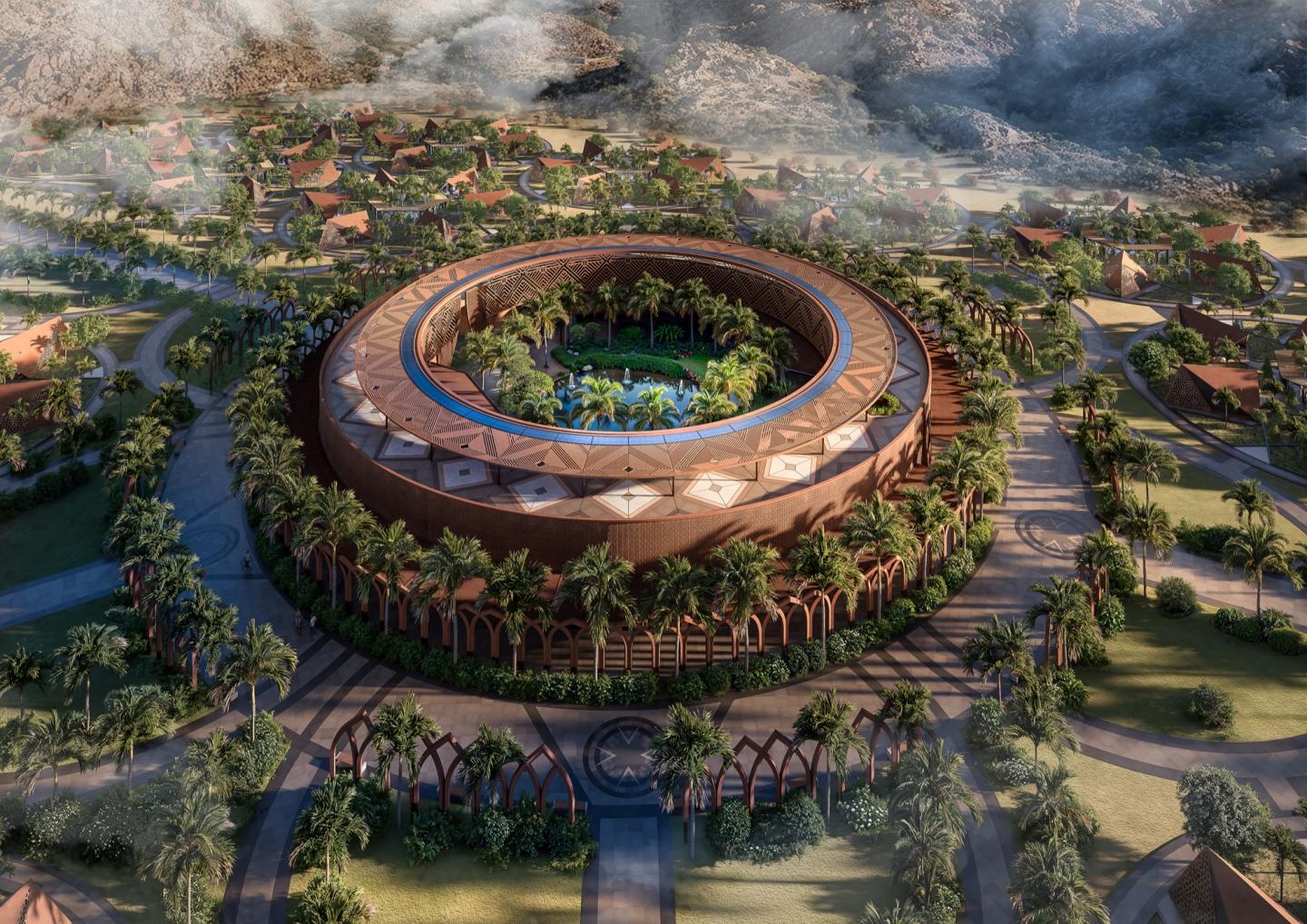

CONCEPT DESIGN
A contemporary sanctuary rooted in history, culture, and nature, Altaona Sports & Wellness Resort emerges from a profound respect for the land it inhabits and the stories it carries. Just fifteen minutes from the historic city of Murcia, the resort stands as a dialogue between the ancestral and the contemporary, merging the essence of Islamic-Andalusian heritage, the warmth of the Mediterranean landscape, and the harmony of sacred geometry found in nature. It is a destination that invites guests not only to rest but to reconnect—with the land, with themselves, and with the deeper rhythms of life.
The master plan is structured through the principles of sacred geometry, a design philosophy that translates universal patterns—circles, hexagons, and fractals—into the spatial organisation of the site. Inspired by the geometric intricacy of Islamic architecture, these patterns express balance, unity, and spiritual continuity, giving form to plazas, courtyards, and gardens that unfold with natural rhythm and human scale. Every axis, every curve, every threshold has symbolic and spatial intent: to guide movement, to inspire stillness, and to create a seamless transition between architecture and landscape.
At the heart of the resort lies the ring-shaped Wellness Center, conceived not merely as a facility, but as the emotional and spiritual core of the entire composition. Its ring-shaped structure embodies connection and infinity, housing within its protective geometry a lush internal oasis. Guests enter a realm of calm and sensory immersion—thermal baths, hammams, treatment rooms, and meditation spaces surround a tranquil water garden shaded by palm canopies. Here, filtered sunlight penetrates through terracotta latticework, dancing across water surfaces and earthen walls, creating an atmosphere of quiet transcendence. The architecture feels ancient in its symbolism, yet forward-looking in its ecological intelligence and spatial fluidity.
ARCHITECTURAL EXPRESSION
The architecture of Altaona Sports & Wellness Resort draws directly from its contextual and cultural roots, using form, material, and texture as tools of storytelling. The built language is defined by a fusion of minimalism and craftsmanship, where every surface is expressive of natural materials and local tradition. The terracotta envelope, crafted from locally sourced clay, provides both chromatic harmony with the surrounding terrain and high thermal inertia, contributing to passive temperature regulation.
A network of arcaded walkways, shaded patios, and open-air lounges create transitional spaces that blur the boundary between indoors and outdoors. The design embraces permeability and climatic responsiveness—natural ventilation and controlled shading maintain comfort throughout the seasons, while the gentle presence of water enhances both sensory and thermal comfort.
Radiating outward from the Wellness Center, clusters of triangular villas reinterpret the geometry of desert tents and nomadic dwellings. Their bold, angular forms rise from the landscape like sculpted terrains, combining privacy and openness. These villas are oriented strategically to capture views of the mountains, olive groves, and inner gardens, while maintaining optimal solar protection. The perforated metal screens—patterned with abstracted motifs from Islamic geometry—filter the sun and cast intricate shadows, giving each interior a dynamic, ever-changing quality of light.
Inside, the design embodies a language of serenity and craft. Walls are finished with carved plaster reliefs and woven latticework that recall the artistry of Andalusian interiors. A palette of natural stone, pale timber, linen, and brass sets a tone of timeless sophistication. The furniture is tactile and low to the ground, evoking intimacy and repose, while generous glazing opens the rooms to the surrounding gardens, blurring the threshold between refuge and landscape.
LANDSCAPE & EXPERIENCE
The landscape master plan transforms the resort into a living, breathing ecosystem. Nature is not a backdrop, but a co-author of the design. The planting strategy emphasises native and adaptive Mediterranean species—olive, palm, and aromatic herbs—chosen for their resilience and sensory richness. The layout of gardens and pathways encourages slow movement, reflection, and discovery.
Every space within the resort is choreographed to evoke emotion. Intimate courtyards offer solitude for meditation or private dining; shaded terraces encourage social interaction; and open plazas host performances or cultural gatherings. Water plays a central role, not only as a cooling and reflective element but as a metaphor for renewal. Streams, pools, and fountains weave through the site, culminating in the Surf Lagoon, a vast body of crystalline water that doubles as both recreational attraction and environmental feature.
The Surf Lagoon anchors the resort’s leisure zone, offering an active counterpoint to the tranquil wellness spaces. Beyond its visual impact, the lagoon contributes to microclimatic balance—its large surface aids in natural cooling and humidity control. Adjacent facilities, such as the sports courts, celebration gardens, and fire pit lounges, complete the experience of movement and connection, allowing guests to flow effortlessly between activity and rest, social energy and quiet contemplation.
SUSTAINABILITY & VISION
Sustainability at Altaona Sports & Wellness Resort is not an addition—it is the foundation of its design philosophy. The architecture employs passive cooling systems, solar collection technologies, and natural materials to minimise energy consumption. Roofs integrate photovoltaic panels discreetly within their geometry, while rainwater harvesting systems support irrigation of the landscape. Permeable paving and bioswales ensure responsible water management, preserving the hydrological integrity of the site.
Material selection prioritises local resources and low-carbon production. Clay, timber, and stone are sourced regionally to reduce transportation impact and support local craftsmanship. Each building envelope is designed to optimise insulation and shading according to orientation, reducing mechanical dependency and maintaining indoor comfort naturally.
But sustainability extends beyond environmental metrics—it encompasses cultural and emotional sustainability. By reviving the spatial poetry of Andalusian architecture and reconnecting guests with the slow, sensory rhythms of Mediterranean life, the resort offers a model of regenerative luxury—where wellness, ecology, and heritage coexist harmoniously.
More than a resort, the project is an architectural symphony of balance and belonging. It celebrates the wisdom of tradition while embracing the possibilities of the future. Through its fusion of form, light, and landscape, it offers an experience of stillness, beauty, and renewal—a contemporary sanctuary that honours the timeless dialogue between humanity and the earth.
Project Name: Altaona Sports & Wellness Resort
Location: Murcia, Spain
Project Type: Hotel & Tourism Resort
Site Area: 220.00 m²
Design Period: 2025
Architects: sanzpont [arquitectura]
A contemporary sanctuary rooted in history, culture, and nature, Altaona Sports & Wellness Resort emerges from a profound respect for the land it inhabits and the stories it carries. Just fifteen minutes from the historic city of Murcia, the resort stands as a dialogue between the ancestral and the contemporary, merging the essence of Islamic-Andalusian heritage, the warmth of the Mediterranean landscape, and the harmony of sacred geometry found in nature. It is a destination that invites guests not only to rest but to reconnect—with the land, with themselves, and with the deeper rhythms of life.
The master plan is structured through the principles of sacred geometry, a design philosophy that translates universal patterns—circles, hexagons, and fractals—into the spatial organisation of the site. Inspired by the geometric intricacy of Islamic architecture, these patterns express balance, unity, and spiritual continuity, giving form to plazas, courtyards, and gardens that unfold with natural rhythm and human scale. Every axis, every curve, every threshold has symbolic and spatial intent: to guide movement, to inspire stillness, and to create a seamless transition between architecture and landscape.
At the heart of the resort lies the ring-shaped Wellness Center, conceived not merely as a facility, but as the emotional and spiritual core of the entire composition. Its ring-shaped structure embodies connection and infinity, housing within its protective geometry a lush internal oasis. Guests enter a realm of calm and sensory immersion—thermal baths, hammams, treatment rooms, and meditation spaces surround a tranquil water garden shaded by palm canopies. Here, filtered sunlight penetrates through terracotta latticework, dancing across water surfaces and earthen walls, creating an atmosphere of quiet transcendence. The architecture feels ancient in its symbolism, yet forward-looking in its ecological intelligence and spatial fluidity.
ARCHITECTURAL EXPRESSION
The architecture of Altaona Sports & Wellness Resort draws directly from its contextual and cultural roots, using form, material, and texture as tools of storytelling. The built language is defined by a fusion of minimalism and craftsmanship, where every surface is expressive of natural materials and local tradition. The terracotta envelope, crafted from locally sourced clay, provides both chromatic harmony with the surrounding terrain and high thermal inertia, contributing to passive temperature regulation.
A network of arcaded walkways, shaded patios, and open-air lounges create transitional spaces that blur the boundary between indoors and outdoors. The design embraces permeability and climatic responsiveness—natural ventilation and controlled shading maintain comfort throughout the seasons, while the gentle presence of water enhances both sensory and thermal comfort.
Radiating outward from the Wellness Center, clusters of triangular villas reinterpret the geometry of desert tents and nomadic dwellings. Their bold, angular forms rise from the landscape like sculpted terrains, combining privacy and openness. These villas are oriented strategically to capture views of the mountains, olive groves, and inner gardens, while maintaining optimal solar protection. The perforated metal screens—patterned with abstracted motifs from Islamic geometry—filter the sun and cast intricate shadows, giving each interior a dynamic, ever-changing quality of light.
Inside, the design embodies a language of serenity and craft. Walls are finished with carved plaster reliefs and woven latticework that recall the artistry of Andalusian interiors. A palette of natural stone, pale timber, linen, and brass sets a tone of timeless sophistication. The furniture is tactile and low to the ground, evoking intimacy and repose, while generous glazing opens the rooms to the surrounding gardens, blurring the threshold between refuge and landscape.
LANDSCAPE & EXPERIENCE
The landscape master plan transforms the resort into a living, breathing ecosystem. Nature is not a backdrop, but a co-author of the design. The planting strategy emphasises native and adaptive Mediterranean species—olive, palm, and aromatic herbs—chosen for their resilience and sensory richness. The layout of gardens and pathways encourages slow movement, reflection, and discovery.
Every space within the resort is choreographed to evoke emotion. Intimate courtyards offer solitude for meditation or private dining; shaded terraces encourage social interaction; and open plazas host performances or cultural gatherings. Water plays a central role, not only as a cooling and reflective element but as a metaphor for renewal. Streams, pools, and fountains weave through the site, culminating in the Surf Lagoon, a vast body of crystalline water that doubles as both recreational attraction and environmental feature.
The Surf Lagoon anchors the resort’s leisure zone, offering an active counterpoint to the tranquil wellness spaces. Beyond its visual impact, the lagoon contributes to microclimatic balance—its large surface aids in natural cooling and humidity control. Adjacent facilities, such as the sports courts, celebration gardens, and fire pit lounges, complete the experience of movement and connection, allowing guests to flow effortlessly between activity and rest, social energy and quiet contemplation.
SUSTAINABILITY & VISION
Sustainability at Altaona Sports & Wellness Resort is not an addition—it is the foundation of its design philosophy. The architecture employs passive cooling systems, solar collection technologies, and natural materials to minimise energy consumption. Roofs integrate photovoltaic panels discreetly within their geometry, while rainwater harvesting systems support irrigation of the landscape. Permeable paving and bioswales ensure responsible water management, preserving the hydrological integrity of the site.
Material selection prioritises local resources and low-carbon production. Clay, timber, and stone are sourced regionally to reduce transportation impact and support local craftsmanship. Each building envelope is designed to optimise insulation and shading according to orientation, reducing mechanical dependency and maintaining indoor comfort naturally.
But sustainability extends beyond environmental metrics—it encompasses cultural and emotional sustainability. By reviving the spatial poetry of Andalusian architecture and reconnecting guests with the slow, sensory rhythms of Mediterranean life, the resort offers a model of regenerative luxury—where wellness, ecology, and heritage coexist harmoniously.
More than a resort, the project is an architectural symphony of balance and belonging. It celebrates the wisdom of tradition while embracing the possibilities of the future. Through its fusion of form, light, and landscape, it offers an experience of stillness, beauty, and renewal—a contemporary sanctuary that honours the timeless dialogue between humanity and the earth.
Project Name: Altaona Sports & Wellness Resort
Location: Murcia, Spain
Project Type: Hotel & Tourism Resort
Site Area: 220.00 m²
Design Period: 2025
Architects: sanzpont [arquitectura]
Aranyam Club


Aranyam club house designed for a master layout is located in the southern outskirts of Indore, Madhya Pradesh, India. The 8600sq.m site is enveloped by dense forest land, where nature asserts its dominance through a rugged terrain, whispering canopies, and an untouched ecological rhythm.
Aranyam — derived from the Sanskrit word for forest, emerges as an architectural dialogue between the wilderness and the human instinct to find order within it.
The conceptual foundation of the clubhouse with a built space of 1650sq.m lies in the fusion of architecture with landscape where built form and terrain are perceived as one continuous gesture. The form emerges from the earth as a series of angular shards that fold and open, creating dynamic spatial experiences while maintaining a low and fragmented skyline that blends with the forest foliage. The club stands as a sculpted response to its landscape — a convergence of geometry and origami, permanence and fluidity, silence and human presence.
The architectural language avoids vertical dominance. Instead, it stretches horizontally, emphasizing connection over hierarchy, a deliberate move to ensure that the built mass dissolves into its surroundings rather than claiming visual supremacy.
Designed in natural materials, with locally available grey basalt stone & wooden framed roof, the embodied carbon footprint is kept minimal. The layout facilitates natural light & ventilation to each space ensuring energy efficiency.
In this natural symphony, the clubhouse does not seek to overpower or intrude; rather, it strives to coexist.
Plot size: 8600sq.m.
Total Built-up area: 1650sq.m.
Design Company: Sanjay Puri Architects.
Lead Design Architect: Mr. Sanjay Puri.
Design Team: Praphulla Kumar, Shwetal Malode, Miti Shah
Aranyam — derived from the Sanskrit word for forest, emerges as an architectural dialogue between the wilderness and the human instinct to find order within it.
The conceptual foundation of the clubhouse with a built space of 1650sq.m lies in the fusion of architecture with landscape where built form and terrain are perceived as one continuous gesture. The form emerges from the earth as a series of angular shards that fold and open, creating dynamic spatial experiences while maintaining a low and fragmented skyline that blends with the forest foliage. The club stands as a sculpted response to its landscape — a convergence of geometry and origami, permanence and fluidity, silence and human presence.
The architectural language avoids vertical dominance. Instead, it stretches horizontally, emphasizing connection over hierarchy, a deliberate move to ensure that the built mass dissolves into its surroundings rather than claiming visual supremacy.
Designed in natural materials, with locally available grey basalt stone & wooden framed roof, the embodied carbon footprint is kept minimal. The layout facilitates natural light & ventilation to each space ensuring energy efficiency.
In this natural symphony, the clubhouse does not seek to overpower or intrude; rather, it strives to coexist.
Plot size: 8600sq.m.
Total Built-up area: 1650sq.m.
Design Company: Sanjay Puri Architects.
Lead Design Architect: Mr. Sanjay Puri.
Design Team: Praphulla Kumar, Shwetal Malode, Miti Shah
Beytepe Residential Project
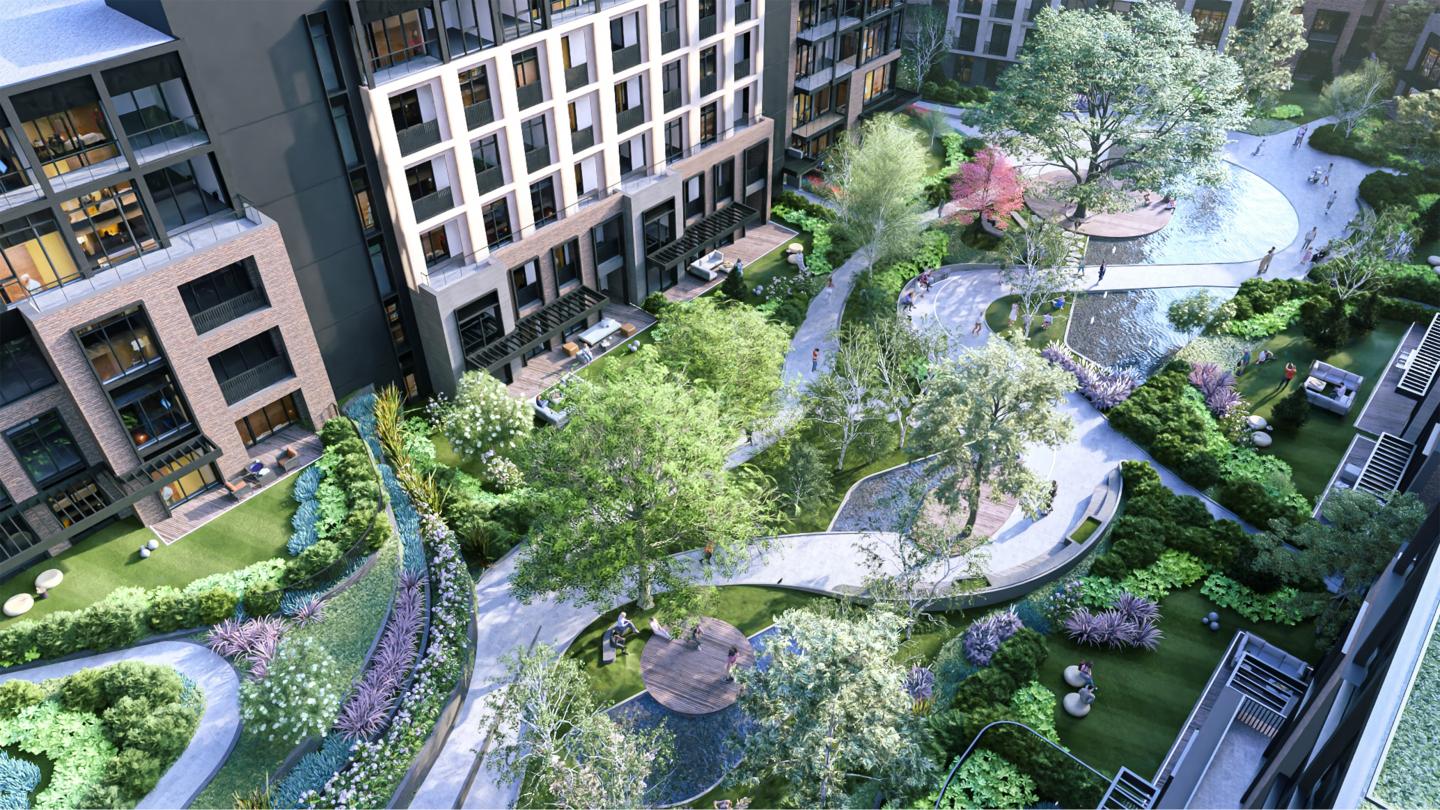

Cities are physical structures, continually growing and evolving. In cities that experience high levels of migration due to natural disasters and socioeconomic diversity, the demand for housing consistently rises. Accordingly, a new residential development encourages the formation of a new community. This project aims to bring together various family types, developing a community spirit and place attachment. Moreover, viewing the project’s initial impact on its silhouette as a structure, with site entrances placed across from each other on the same street, allows the feel “arrival home” experience begins along the street.
The site's sloped terrain allows the buildings to orient toward the surrounding forest views, ensuring that blocks do not obstruct each other’s facades. The location of the buildings creates a central courtyard designed for relaxation, entertainment, and leisure activities, where the landscape featuring urban furniture and water elements integrates the city’s natural elements into residential life. The plazas and reflection pools between the blocks create sensual experiences that enable all users to interact with the design. Green spaces at various levels and grass hills create activities like reading and socializing while also offering areas for recreation and children’s play.
In landscape design, the spatial arrangement of structures and compositional elements have been considered. In seasonal transitions, elements of color, texture, fragrance, and aesthetics are designed to create a visual impact, with the intent of appealing to each resident through the landscape features. The planned road around the blocks separates social life from traffic, also ensuring safety for children. An uninterrupted walking path is integrated into the landscape to support physical activities. The social facilities attached to the residential units, featuring cinema and activity rooms, further strengthen neighborhood connections.
Designed to serve both individual lifestyles and the broader community “Beytepe Residences” accommodates diverse family sizes and meets the demands of social life, aiming to strengthen the connection between people and nature.
Site Area: 20717,62 m²
Gross Floor Area (GFA): 73803,54 m²
Net Floor Area (NFA): 41435,24 m²
Number of Floors: 30
Orçun Ersan, Sedef Yıldız, Berkay Ünal, Gökçe Yıldız, Nazlı Zeynep Köse, Başak İpek, Melis Ezgi Uygun, İrem Göktaş, Zeynep Akkoyunlu
The site's sloped terrain allows the buildings to orient toward the surrounding forest views, ensuring that blocks do not obstruct each other’s facades. The location of the buildings creates a central courtyard designed for relaxation, entertainment, and leisure activities, where the landscape featuring urban furniture and water elements integrates the city’s natural elements into residential life. The plazas and reflection pools between the blocks create sensual experiences that enable all users to interact with the design. Green spaces at various levels and grass hills create activities like reading and socializing while also offering areas for recreation and children’s play.
In landscape design, the spatial arrangement of structures and compositional elements have been considered. In seasonal transitions, elements of color, texture, fragrance, and aesthetics are designed to create a visual impact, with the intent of appealing to each resident through the landscape features. The planned road around the blocks separates social life from traffic, also ensuring safety for children. An uninterrupted walking path is integrated into the landscape to support physical activities. The social facilities attached to the residential units, featuring cinema and activity rooms, further strengthen neighborhood connections.
Designed to serve both individual lifestyles and the broader community “Beytepe Residences” accommodates diverse family sizes and meets the demands of social life, aiming to strengthen the connection between people and nature.
Site Area: 20717,62 m²
Gross Floor Area (GFA): 73803,54 m²
Net Floor Area (NFA): 41435,24 m²
Number of Floors: 30
Orçun Ersan, Sedef Yıldız, Berkay Ünal, Gökçe Yıldız, Nazlı Zeynep Köse, Başak İpek, Melis Ezgi Uygun, İrem Göktaş, Zeynep Akkoyunlu
BOOM BURST—Art Omi Design Museum in Hudson Valley
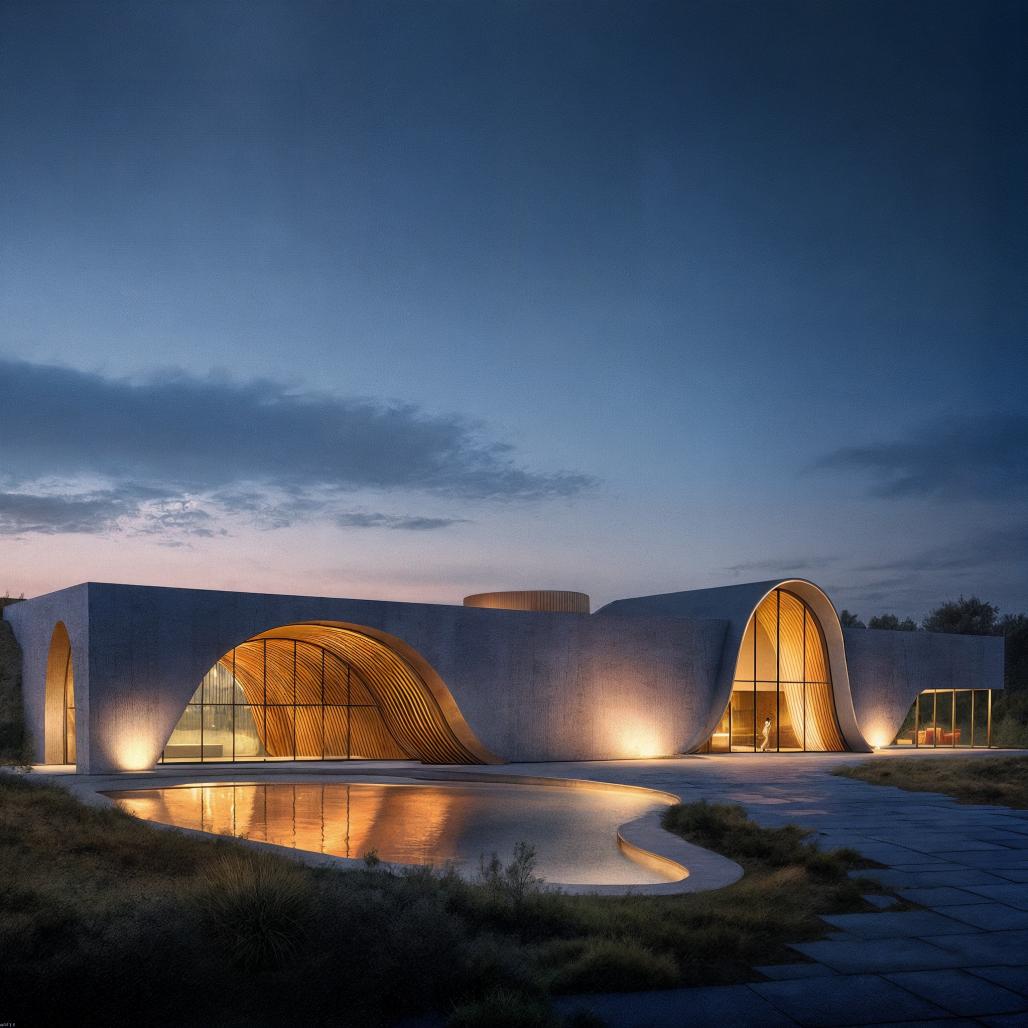

Inspired by an experimental process of inflating and deflating a balloon to explore form and movement, the Art Omi Design Gallery reinterprets kinetic gestures into architectural space. The design transitions from a linear system of tensioned strings to a centralized spherical volume, carved out and preserved as the main exhibition space and public entrance. This void becomes the anchor of spatial experience, emphasizing a fluid internal circulation that guides visitors across the site.
A pivoting circulation path runs from west to east, generating a continuous sequence of gallery spaces. Flanking this core are two studio wings that host art workshops and public programs, while the journey culminates in an immersive lakeside experience. The artist studios are suspended above in a series of smaller circular volumes that appear to hover—echoing the floating sensation captured in the original folly experiment.
The curved concrete structure is informed by a conceptual yarn grid developed through balloon deflation studies. As the balloon contracts, the attached strings shift in shape and position, forming a responsive, landscape-integrated framework. The building retains this language through its curvilinear roof and spatial transitions. Material choices reinforce this transformation: warm wood-lined interiors contrast with the cool, monolithic concrete shell, offering diverse sensory experiences as visitors move through the space.
More than a gallery, this project is an architectural meditation on lightness, movement, and material memory—transforming a conceptual folly into a grounded cultural landmark.
Type: Art Omi Culture & Art Museum
Location: Hudson Valley, NY
Client: World travelers to Art Omi Park
Size: 12000ft²
Daria Yang DU
A pivoting circulation path runs from west to east, generating a continuous sequence of gallery spaces. Flanking this core are two studio wings that host art workshops and public programs, while the journey culminates in an immersive lakeside experience. The artist studios are suspended above in a series of smaller circular volumes that appear to hover—echoing the floating sensation captured in the original folly experiment.
The curved concrete structure is informed by a conceptual yarn grid developed through balloon deflation studies. As the balloon contracts, the attached strings shift in shape and position, forming a responsive, landscape-integrated framework. The building retains this language through its curvilinear roof and spatial transitions. Material choices reinforce this transformation: warm wood-lined interiors contrast with the cool, monolithic concrete shell, offering diverse sensory experiences as visitors move through the space.
More than a gallery, this project is an architectural meditation on lightness, movement, and material memory—transforming a conceptual folly into a grounded cultural landmark.
Type: Art Omi Culture & Art Museum
Location: Hudson Valley, NY
Client: World travelers to Art Omi Park
Size: 12000ft²
Daria Yang DU

